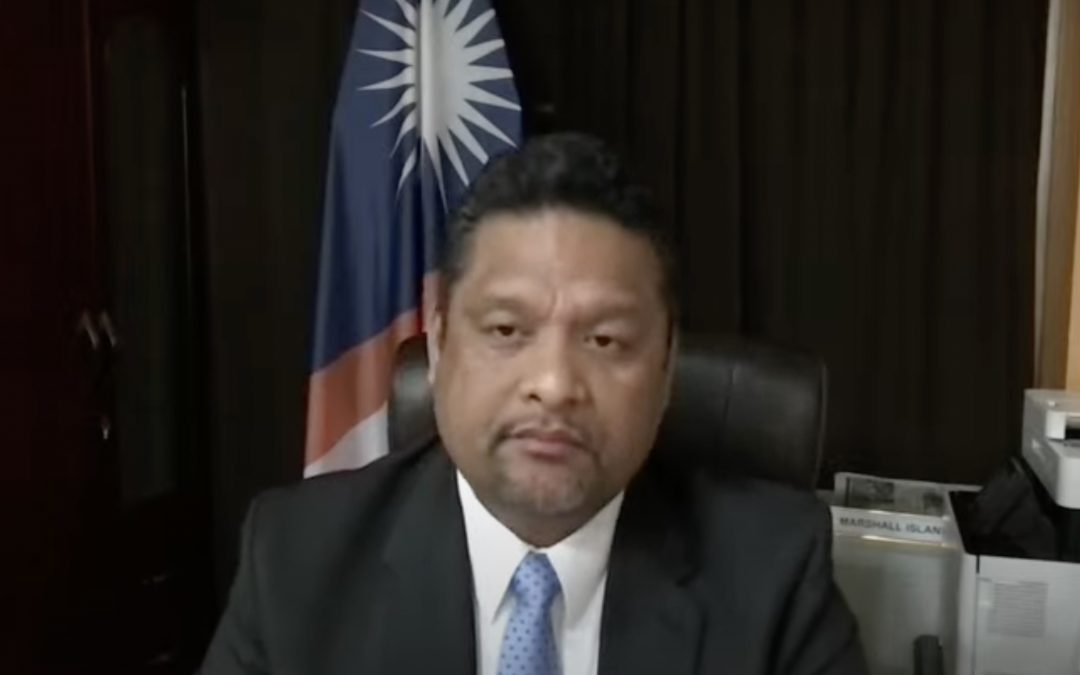WASHINGTON — Most Americans learn briefly about the Marshall Islands in a high school history class.
Resting five thousand miles west of California in the heart of the central Pacific, the group of islands played a small but crucial role in the Cold War arms race between the United States and the Soviet Union. It’s the site in which the U.S. tested their nuclear arsenal, detonating 67 atomic bombs between 1946 and 1958 in the event that the Cold War escalated dramatically.
Fortunately that never happened. As a result, the American public was granted the privilege to largely forget about the extreme and lasting damage that nuclear testing caused on the Marshall Islands.
The Marshallese people were not so lucky.
Nearly six decades after the last American nuclear test was dropped on the Marshall Islands, the small republic is still dealing with the effects of those detonations and urging Congress to take action.
“The devastating consequences of this horrible legacy continue to this day,” said Casten Nemra, the nation’s Minister of Foreign Affairs at a House Natural Resources Committee hearing on the U.S. Nuclear Legacy in the Marshall Islands on Thursday.
Constant personal and environmental crises have plagued the Marshall Islands since it was used as an American nuclear testing ground.
Among Marshallese citizens, thyroid cancer has become a leading cause of death in the last half century, according to a U.S. government study. 50% of thyroid cancer cases on the Marshall Islands are a direct result of the radioactive fallout produced by nuclear testing, according to predictions from the same government study.
In an effort to clean the radioactive debris caused by the tests, the U.S. deposited nuclear waste into a concrete storage facility called the Runit Dome in 1977. Today, as the effects of climate change cause ocean water levels to rise, the dome is at risk of collapsing, and radioactive debris is leaking into nearby waters and infecting local wildlife.
High levels of radiation were found in giant clams – a popular delicacy in the Marshall Islands – near Runit Dome in 2019, according to reporting from the Los Angeles Times.
Panelists at Thursday’s hearing argued that the U.S. has not done enough to maintain the Dome’s leakage or to compensate the Marshallese people for the hardships they have faced in the decades since testing has ended.
“This is a story of promises and commitments made but not kept,” Nemra said.
“We need action,” said Rhea Moss-Christian, chair of the Marshall Islands National Nuclear Commission. “The U.S. nuclear testing program aimed to enhance the security of the United States and its allies, but it continues to create insecurity for people in the Marshall Islands.”
Lawmakers on both sides of the aisle agreed the situation has been neglected by the U.S. government, and pledged to advocate for more funding and resources on behalf of the Marshallese people in Congress.
Addressing the hearing’s panelists, Rep. Katie Porter, D-Calif., offered assurance to the Marshallese representatives that action – demonstrated by the bipartisan support present at the hearing – was coming.
“When you have [Republican] Representative Gosar and [Democratic] Representative Porter in strong agreement,” Porter said, “I want you to take that as the best possible evidence that the United States Congress is going to work on a bipartisan basis to address the nuclear legacy [in the Marshall Islands].”

